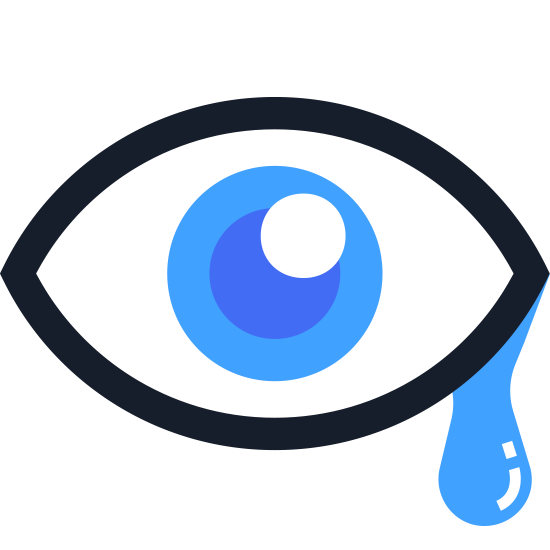
Dry Eyes Disease
At FYidoctors, we’ve incorporated advanced testing and treatments in many of our clinics to diagnose and help manage dry eye disease.
Book an eye exam
What is dry eye disease?
Your eyes are constantly bathed in tears, which is a complex fluid made up of three distinct layers. This tear film helps to keep your eyes healthy and comfortable. The watery layer provides hydration, the outer oily layer prevents tear evaporation, and the inner slippery layer ensures that the tears spread evenly over your eyes. However, if any of these layers aren't working properly, it can result in dry eyes. This can happen when tear ducts don't produce enough tears or when tear evaporation increases. Some common causes of dry eyes include medical conditions, such as rheumatoid arthritis, or meibomian glands that don't produce enough oil.
Dry eyes occur when the tears become unstable and cause dry spots on the surface of the eyes. This can lead to inflammation and the uncomfortable symptoms associated with dry eye disease.
Risk Factors


Environmental: Where we live and the climate

Occupation: Computer screen time or working outdoors

Medications: Antihistamines, high blood pressure medications (diuretics), and thyroid supplements

Gender: Women more than men, especially those in post-menopausal years
Dealing with dry eyes
With some relatively simple lifestyle changes, there are steps you can easily incorporate into your daily routine to make symptoms of dry eye disease less severe. These include:

Using a humidifier

Getting enough sleep

Reducing contact lens wear

Wearing sunglasses to block the sun and wind

Drinking sufficient water

Taking breaks from your smart phone and computer and reducing screen brightness

Warm compresses

Spot the symptoms
The first step in determining if you might suffer from dry eye disease is identifying the symptoms such as:
If you believe you suffer from any of the above symptoms, and/or have some of these risk factors, you may have dry eye disease and should book an appointment with one of our doctors. FYidoctors now offer dry eye disease Personalized Treatment Plans so together we can confidently and properly address your issues.


Gritty, burning, watery or red eyes

Eyes sometimes feel uncomfortable or irritated and itchy

Watery eyes in the wind

Film over their vision

Blurred vision and/or need to over-blink

Discomfort while reading digital screens

Sensitivity to light
The FYi Difference
The FYi Difference

Lenses made in Canada

Doctor-recommended lenses for your unique vision needs

Customized lenses adapted to lifestyle and prescription needs

High quality control for lenses that meet our standards

Precise digital measurements tailor eyewear to your face, posture and prescription

Over 350 clinics across Canada